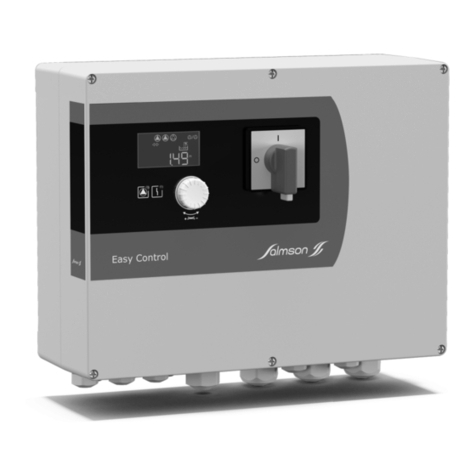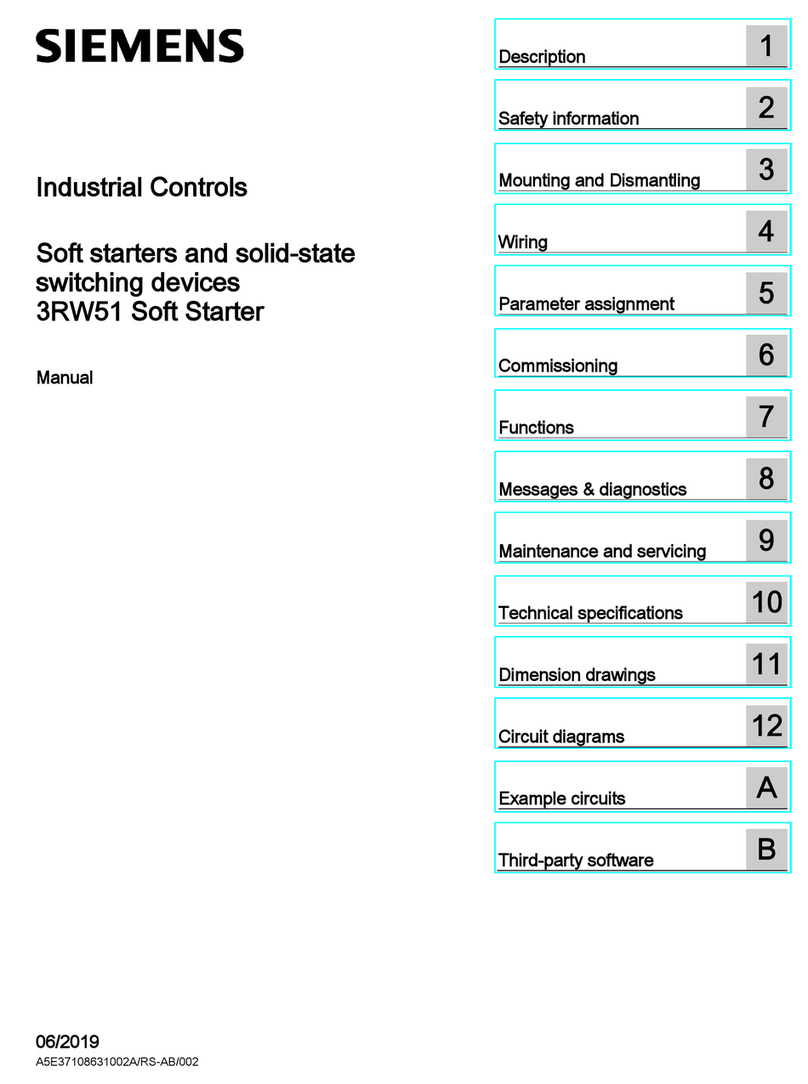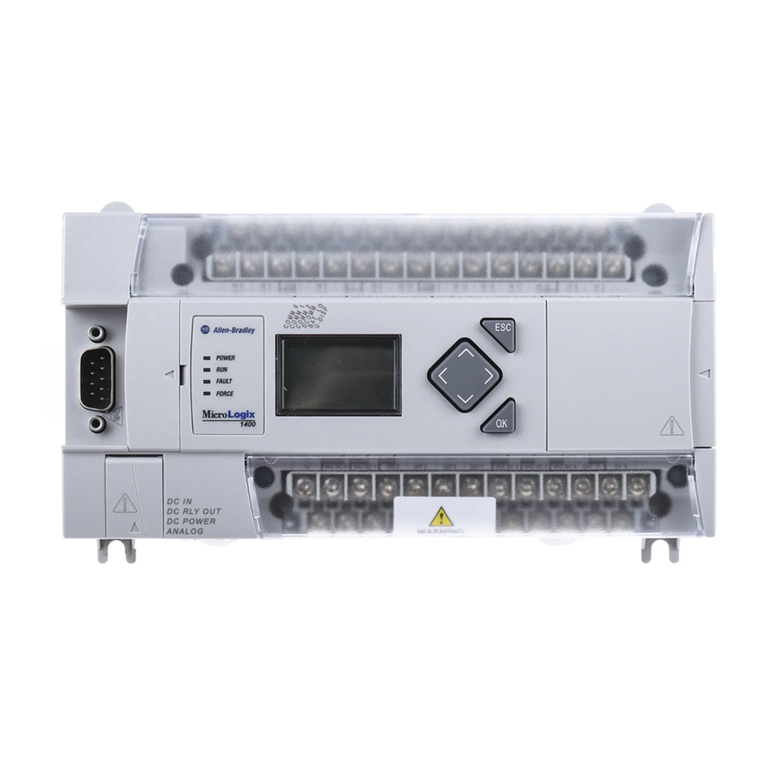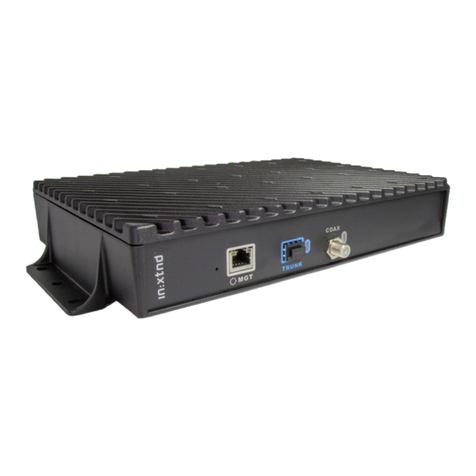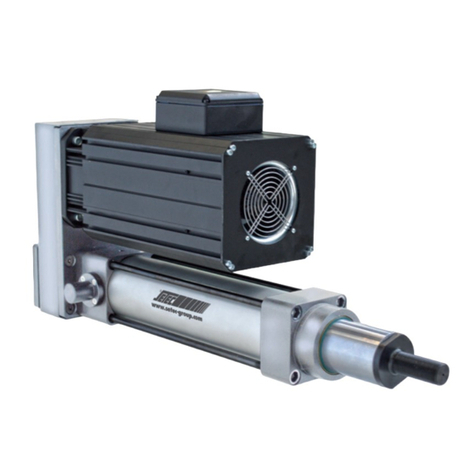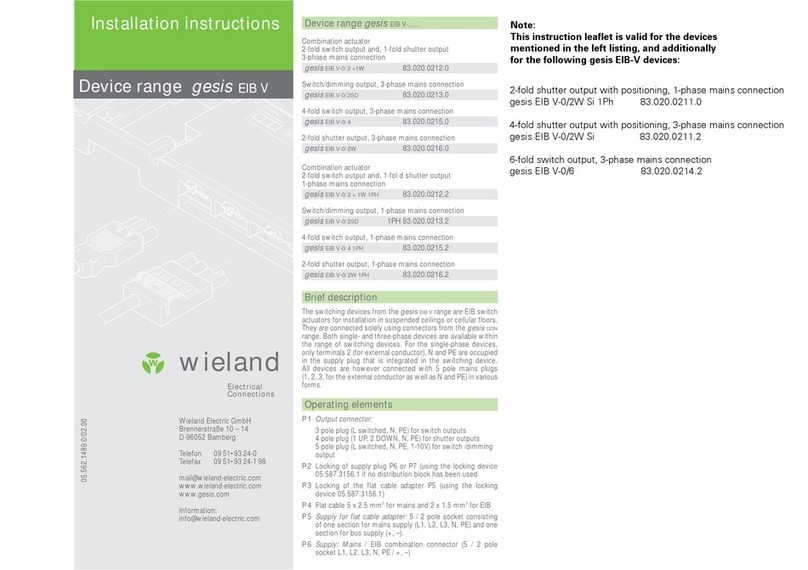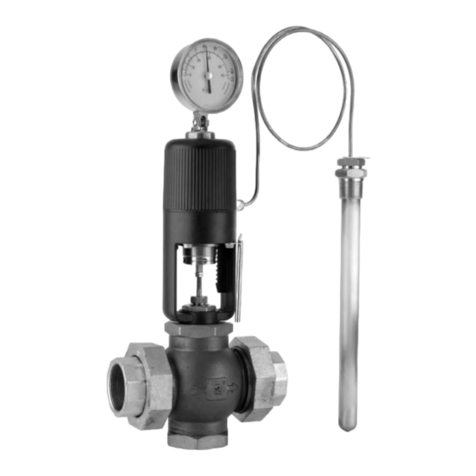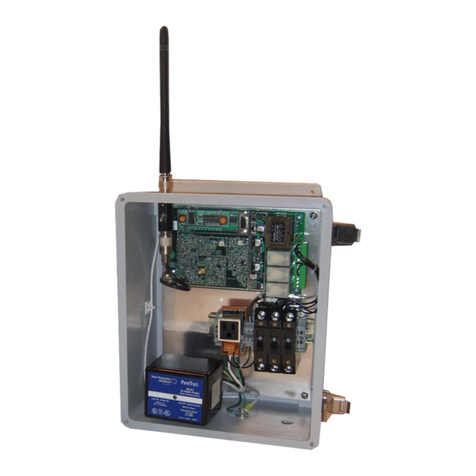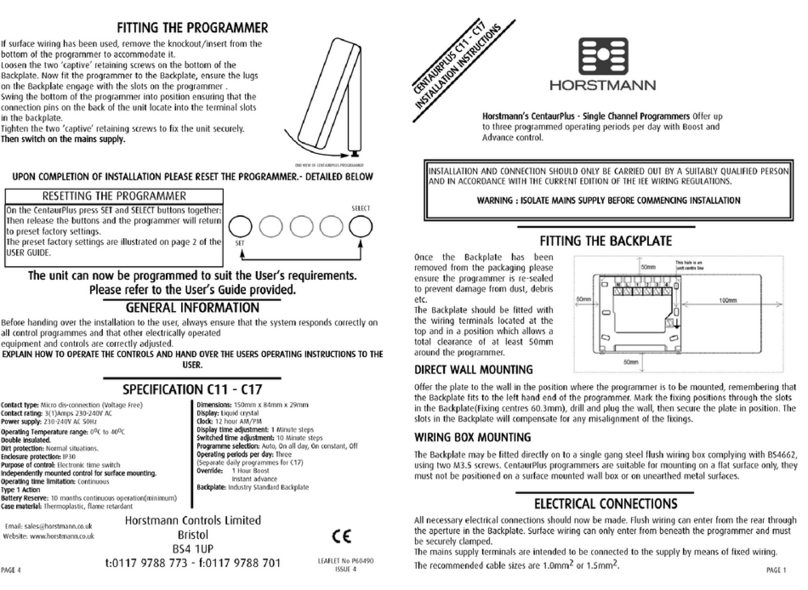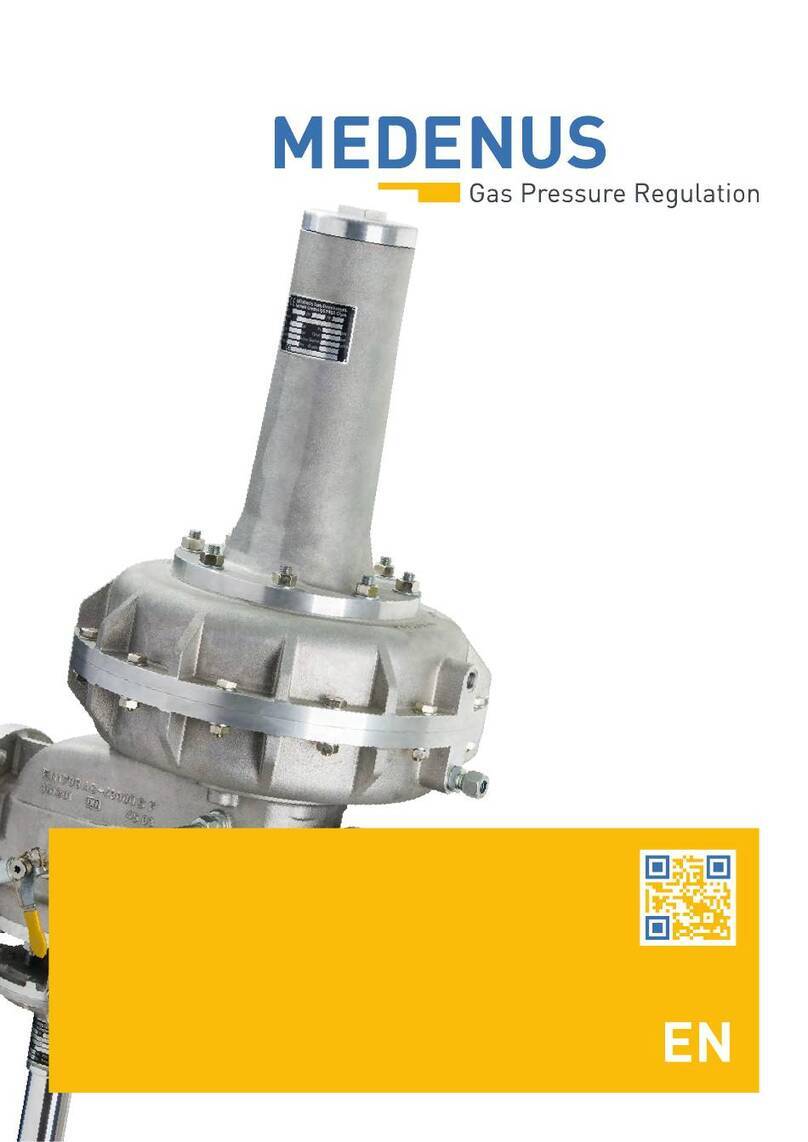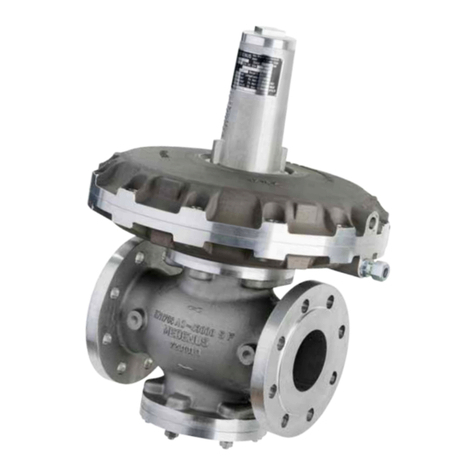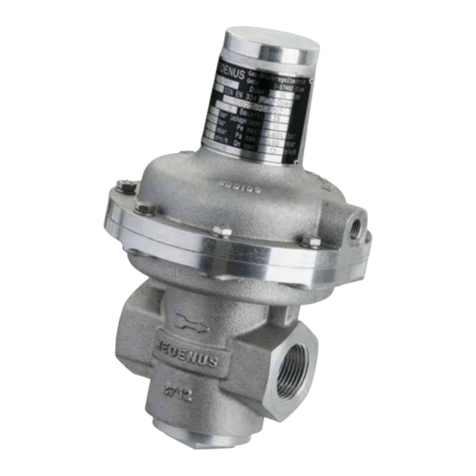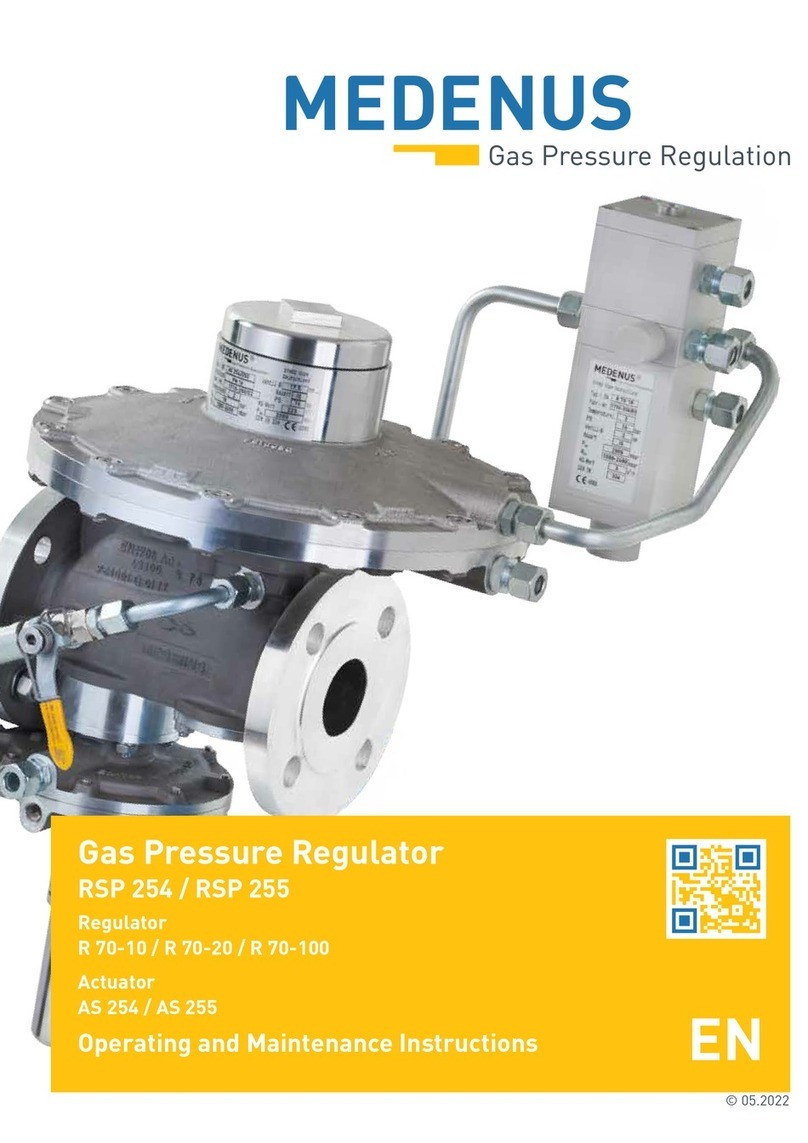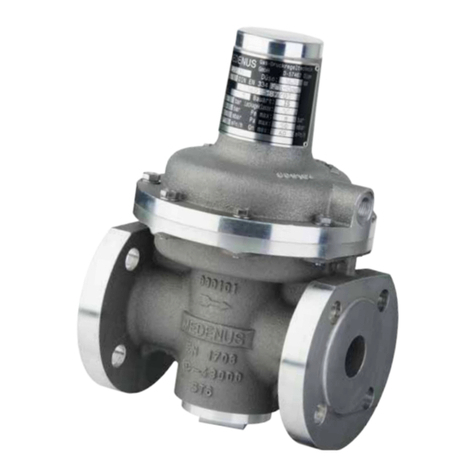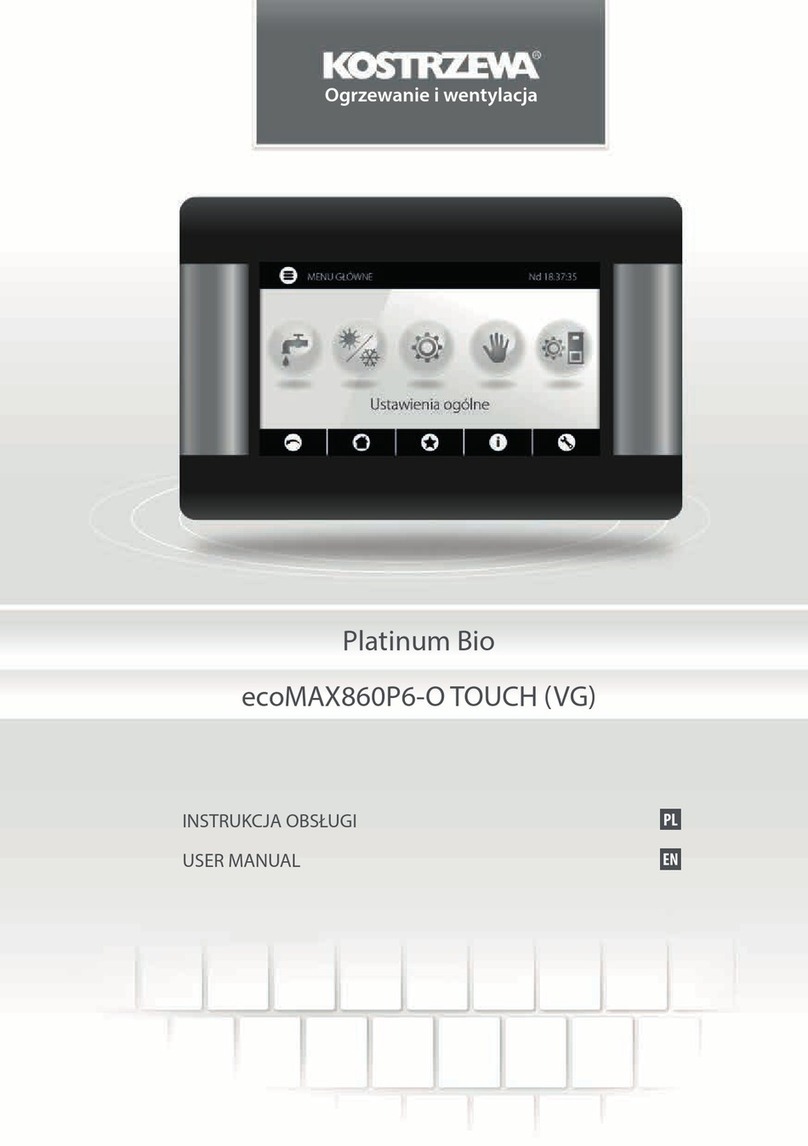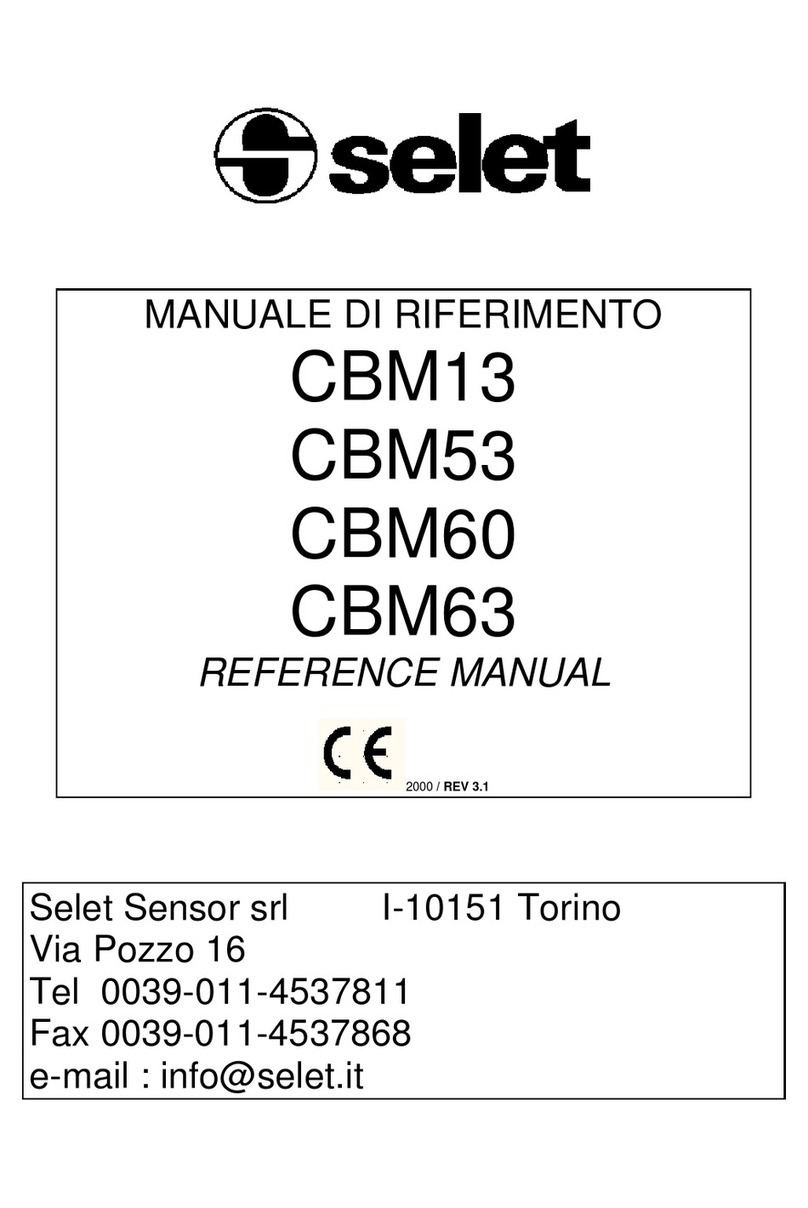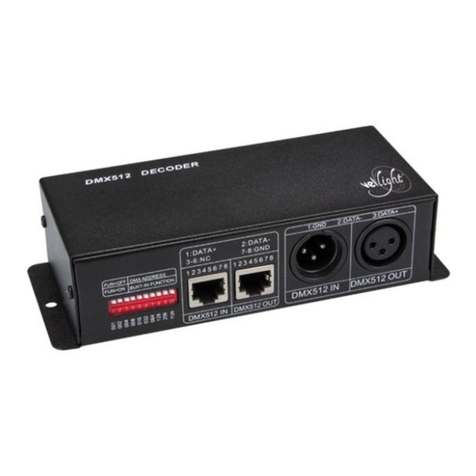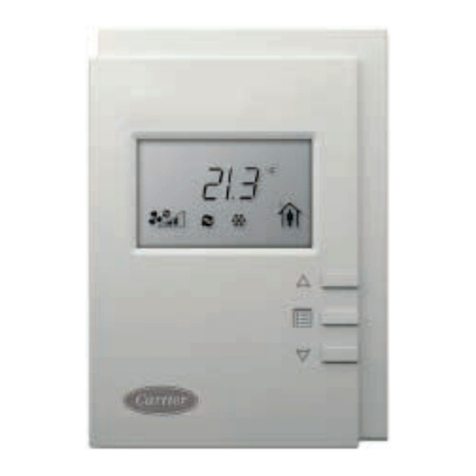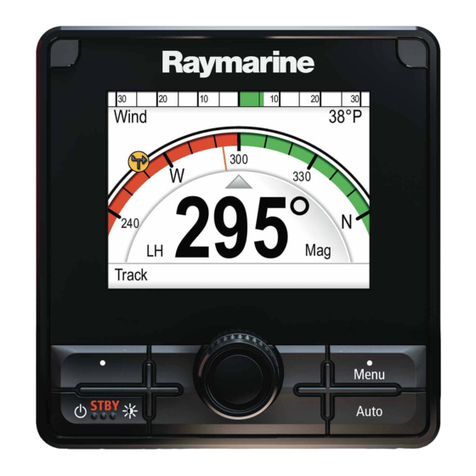
16
© 02.2019
• For the functional test of the GPR, let gas flow via the discharge line venting
to the outside atmosphere and read the set regulating pressure on the outlet
pressure gauge (item 7.12).
• After closing a constant closing pressure within the closing pressure class
can be read on the outlet pressure gauge (item 7.12).
• Slowly open the shut-off valve (item 7.13)
• Screw on the sealing cap (item 7.15) of the safety shut-off valve (SSV) again.
Changing the control range
Switching to the control range of a different setpoint spring can be done for the SSV as
well as for the GPR while the device is pressurised.
Safety shut-off valve
The SSV closes if the overpressure setpoint spring (upper trigger level) is removed from
a pressurised system.
Setting gas pressure regulator:
Unscrew the protective cap (item 7.43) on the R70 and change the outlet pressure (Pd) by turning the setpoint adjuster
(item 7.40). The outlet pressure on the pressure gauge (p.13, item 7.12) Watch outlet pressure side.
Turn clockwise - pressure increase
Turn counterclockwise - pressure reduction
For the exact setting, the gas on the outlet pressure side must flow off easily, otherwise the closing pressure will be
displayed. If the desired output pressure can not be set with the installed spring, it may be necessary to replace the
control springs in the controller (R70).
Change riders (R70)
• Relax the control spring by turning the setpoint adjuster (item 7.40) counterclockwise.
• Remove the cover (item 7.41) of the control unit (R70) (4x M6), paying attention to the
O-ring in the housing.
• Insert suitable setpoint spring (item 7.42) and close the lid again.
• Set the desired outlet pressure (Pd) as described above.
• Screw the protective cap (item 7.43) back on the R70.
7.40
7.41
7.42
7.43
7.33
7.44
7.30
7.45
The discharge line (item 7.31) is used to reduce the setting pressure if necessary
via the outlet pressure line (page 13, item 7.45).
In order to open the actuator (p. 13, item 7.03) as the gas decreases, the control
pressure (pos. 7.33) must be increased.
If the quantity taken off the gas decreases, the actuator (p. 13, item 7.03) must
be closed accordingly. To do this, the controller (item 7.33) reduces the signal
pressure and the excess actuating pressure in the control unit of the actuator
is reduced via the discharge line (item 7.31). The outflow velocity via the outflow
line (item 7.31) can be infinitely adjusted using the outflow regulator (item 7.44).
On delivery, the outflow regulator (item 7.44) is open 4 revolutions, ie 2 mm.
If the outflow velocity is to be increased, the flow restrictor (item 7.44) must
be opened by turning the throttle screw (item 7.45) counterclockwise. If the
outflow speed is to be reduced, the flow restrictor must be closed by turning
the throttle screw clockwise.
7.4.1 Discharge line, Outflow adjuster




















